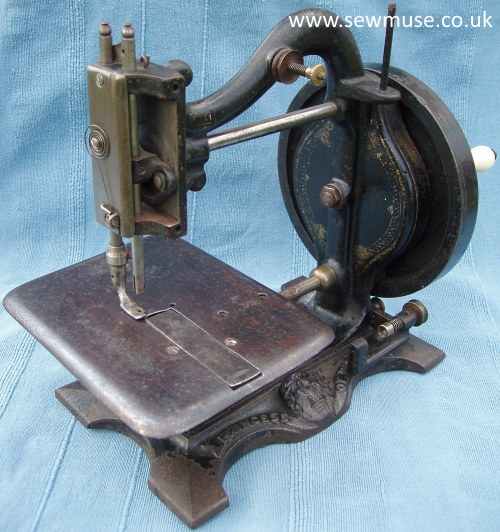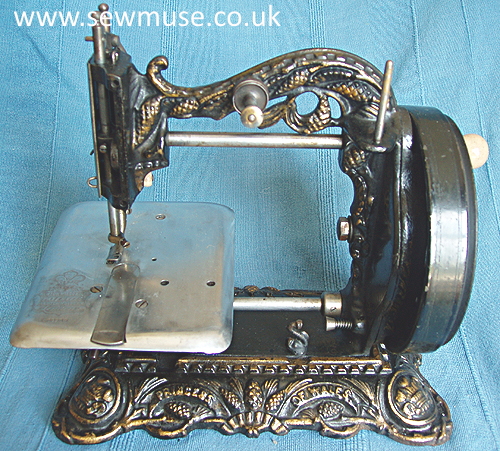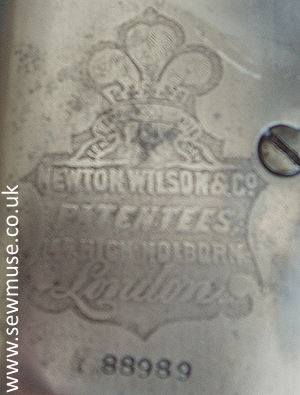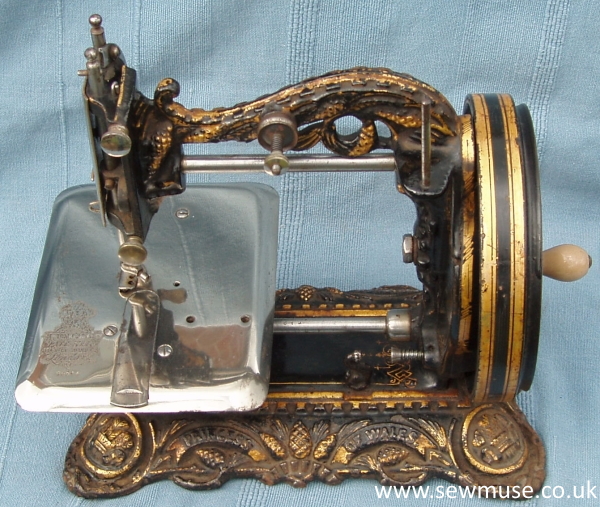Newton Wilson & Co. was founded by William Newton Wilson one of the pioneers of the sewing machine industry in Great Britain who was involved in the sewing machine trade from 1851.
For many years the company imported machines such as the Boudoir and Grover & Baker machines from America. In 1864 Newton Wilson & Co. started manufacturing industrial sewing machines these were copies of Howe and Singer machines with production being undertaken at the factory of Campion & Johnson, Woolpack Lane, Nottingham.
The firms first domestic machines were produced in 1866, these were both chain stitch models known as the Queen Mab (Patented 14th Feb 1866) and the Cleopatra which were capable of producing 500 and 1000 stitches per minute respectively. The companyís factory moved to Pope Street, Birmingham a year later and the its first lock-stitch machine Ė the Penelope was introduced as was a rotary principle machine known as the Dorcas.
In 1869 production of the The Princess of Wales lock-stitch machine commenced, this machine was to form the mainstay of the firms domestic sewing machine range. Production of the Penelope stopped in 1870 with the Doras being withdrawn a year later.
The castings of the Princess of Wales machine were redesigned c1870 becoming highly ornateand a modified version of the Princess of Wales machine was added to the range in 1874, known as Englandís Queen it had the facility to produce herringbone stitch. A portable light weight machine - the Queen Bess was also introduced in this year. In 1875 production commenced of further models - The Queen Oí Scots and Wilsonís Patent Singer. By 1876 Wilsonís Patent Whistler was also being manufactured.
However the firm had financial problems and in 1877 John Cornforth took possession of the St Georges Foundry having previously advanced Newton Wilson a total of £21,183.
It appears John Cornforth and William Newton Wilson came to a mutally benificial arrangement with the manufacturing being carried out by a new firm The St. Georgeís Foundry Company at the Pope Street factory. The retail side continued to be undertaken by Newton Wilson & Co. at 144 High Holborn London until 1883 when a new Depot at 102 Southampton Row London was opened.
By 1884 the manufacturing firm had become The St Georgeís Engineering Co. and was advertising that it was the sole manufacturer of the Princess of Wales and Queen machines.
Other machines produced by the companies were: Tower c1876, Perfection c1877 & a machine known as Wallace Ash c1880 for a Portsmouth dealer.
Newton Wilson & Co ceased trading c1891 less than a year after Newton Wilson had left, sadly he did not enjoy a long and happy retirement for he died in 1894 aged 67 after a long illness.
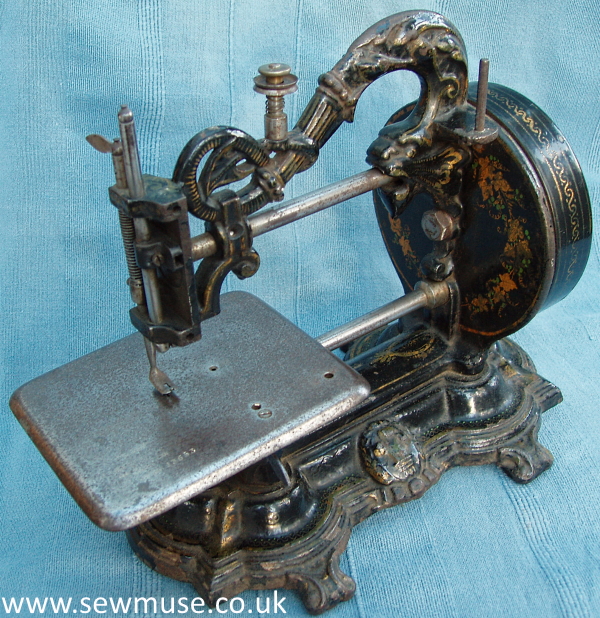
Cleopatra Serial No. 13653.
A nice complete example of a Cleopatra chain-stitch sewing machine manufactured around 1870. The arm takes the form of a serpent so it would appear that the name and its design takes insperation from William Shakespear's Antony and Cleopatra. This followed on from the company's slightly earlier machine called the Queen Mab which is perhaps a reference to a Mid-Summer Nights Dream also by the bard.
Capable of producing 1000 stitches a minute at the time the Cleopatra was the intended to lead its class and initially cost 5 Guineas. The base was designed to dispense with the need for a table clamp and is very heavy, underneath it has a Registered design diamond for 8 April 1867.

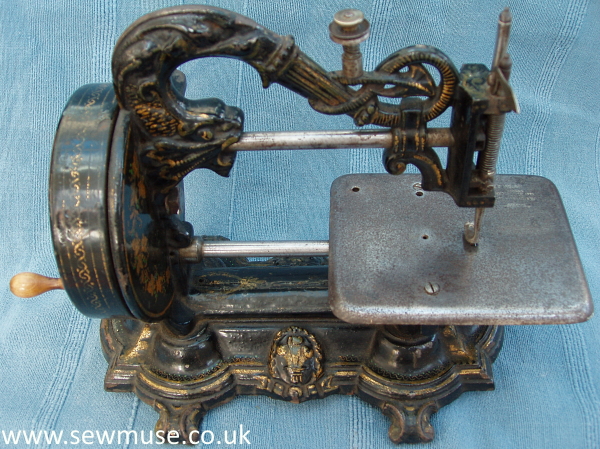
The balance wheel is intricately cast and the cloth plate is stamped with the Company's name and address, serial number, Licence number 1971 and Patent date of 1857. The last two relate to Willcox & Gibbs revolving hook patent which Newton Wilson paid a fee to use.
Also on the cloth plate stamped in increadibly small letters is D. Wheeler Newbury whose sewing machine depot was established in 1867 at 45 Northbrook Street, Newbury however it was not until June that year that he advertised the Cleopatra.
In early 1872 he moved his business to Speenhamland and by February 1874 the business was being run by his wife.
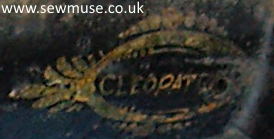
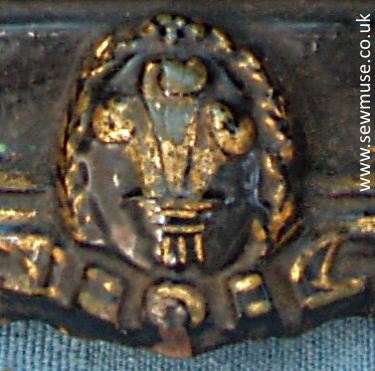
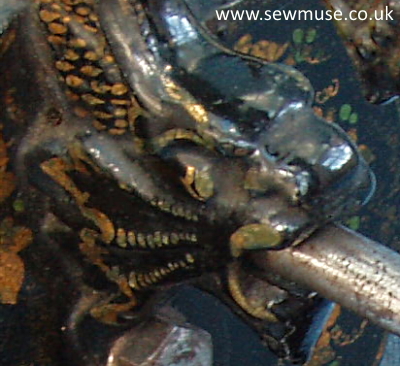
Cleopatra's "eye" appears on the base as does Newton Wilsons Trade Mark the Prince of Wales Feathers which appears both on the front and back of the machine.
Princess of Wales Serial No. Unknown.
Although this machine is in poor condition it is an early example of the Princess of Wales machine and was produced in late 1869 or early 1870. It is very much the ugly duckling with simple castings when compared with the later machines below.
The balance wheel is a plain casting and the bobbin winder has to be manually engaged using a thumb screw to press it against the balance wheel. On later versions the bobbin winder is driven directly from the balance wheel. This was further improved to allow the balance wheel to be disengaged for easier bobbin winding which also reduced wear on the sewing mechanism.
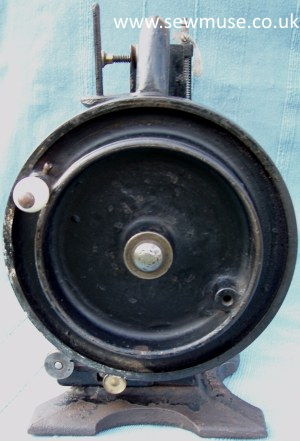

The Newton Wilson & Co. Trade Mark is cast centrally into the scalloped base with the name of the machine spanning it which is partly obsured by the bobbin winder.
On the cloth plate just the Company name and principal London address - 144 High Holborn, London appear along with the word Patent. There is no serial number anywhere on the machine however many parts are stamped VII.
Princess of Wales Serial No. 88989.
This machine was probably produced c1878. The highly ornate decoration is cast into the base along with the name Princess of Wales and is then hand painted in gold.
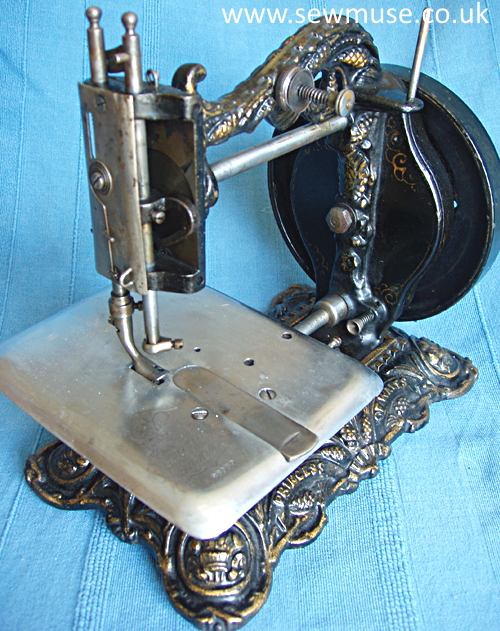
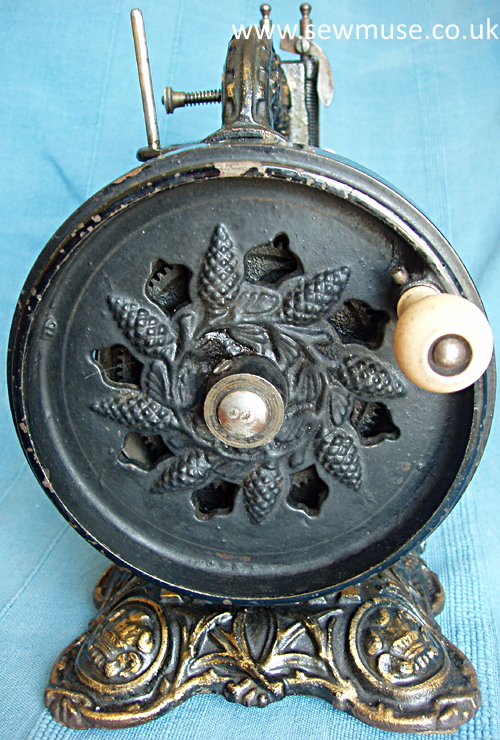
The cast decoration also features on the balance wheel, which provides a direct drive to the bobbin winder.
On each corner of the base the Newton Wilson & Co Trade Mark - the Prince of Wales Feathers appears.
Attention to detail is outstanding, note the small porcelain handle to operate the presserbar.
The Newton Wilson & Co. Trade Mark appears again on the front left of the cloth plate with the German motto "Ich Dien" which translates to "I serve". The Company's principal London address - 144 High Holborn is also given with the machines Serial number stamped just below.
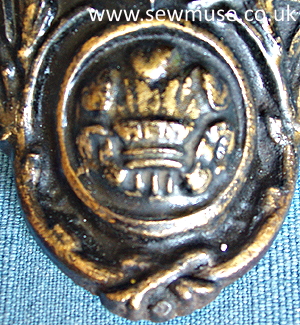
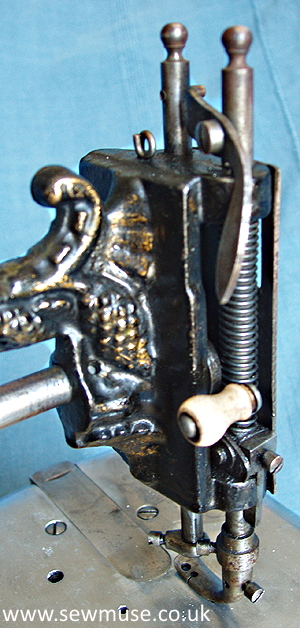
Princess of Wales: Serial No. 96544.
Another example of the Princess of Wales sewing machine. The cast details make it a very difficult machine to clean. The cloth plate is nickel plated which although it generally is in good condition it has suffered from corrosion particularly where the Trade Mark has been stamped into the plating and the base has lost some of its jappaning round the bottom recesses.
| | | | | | | | | | 





